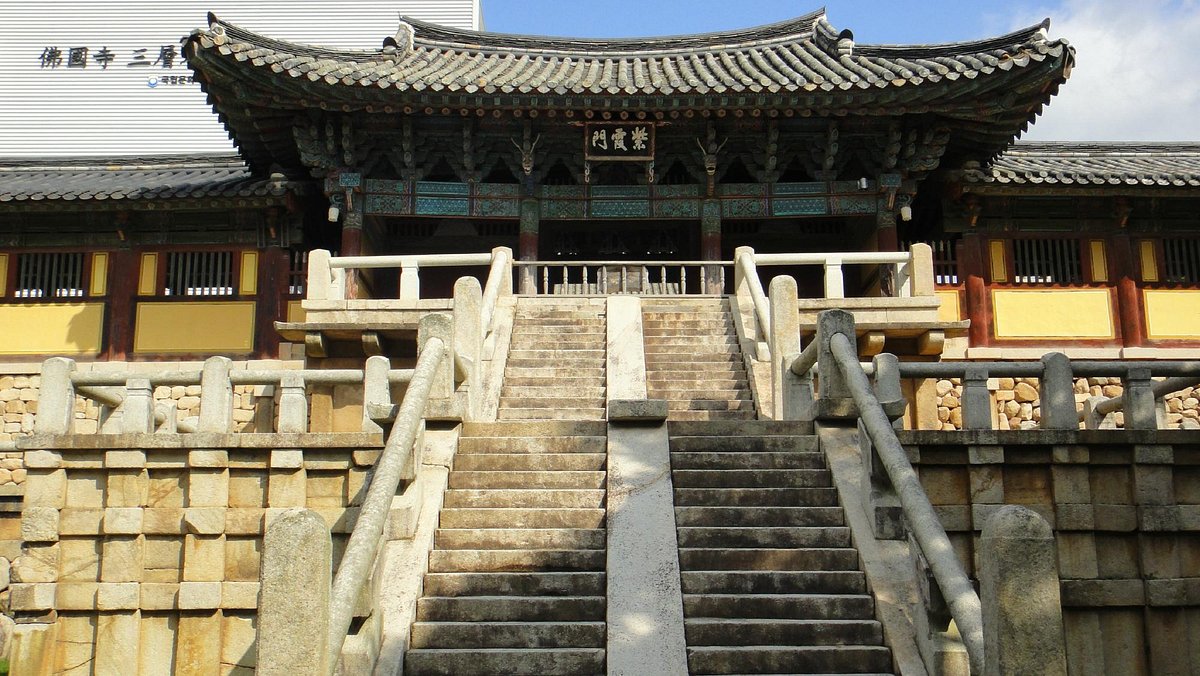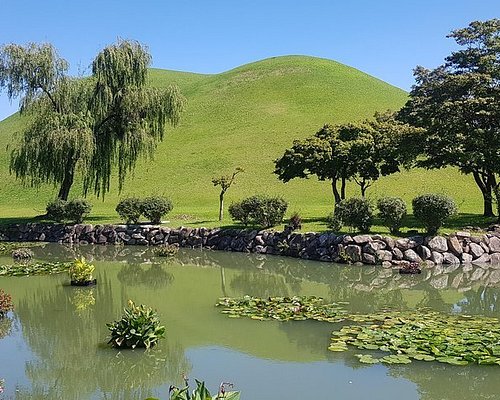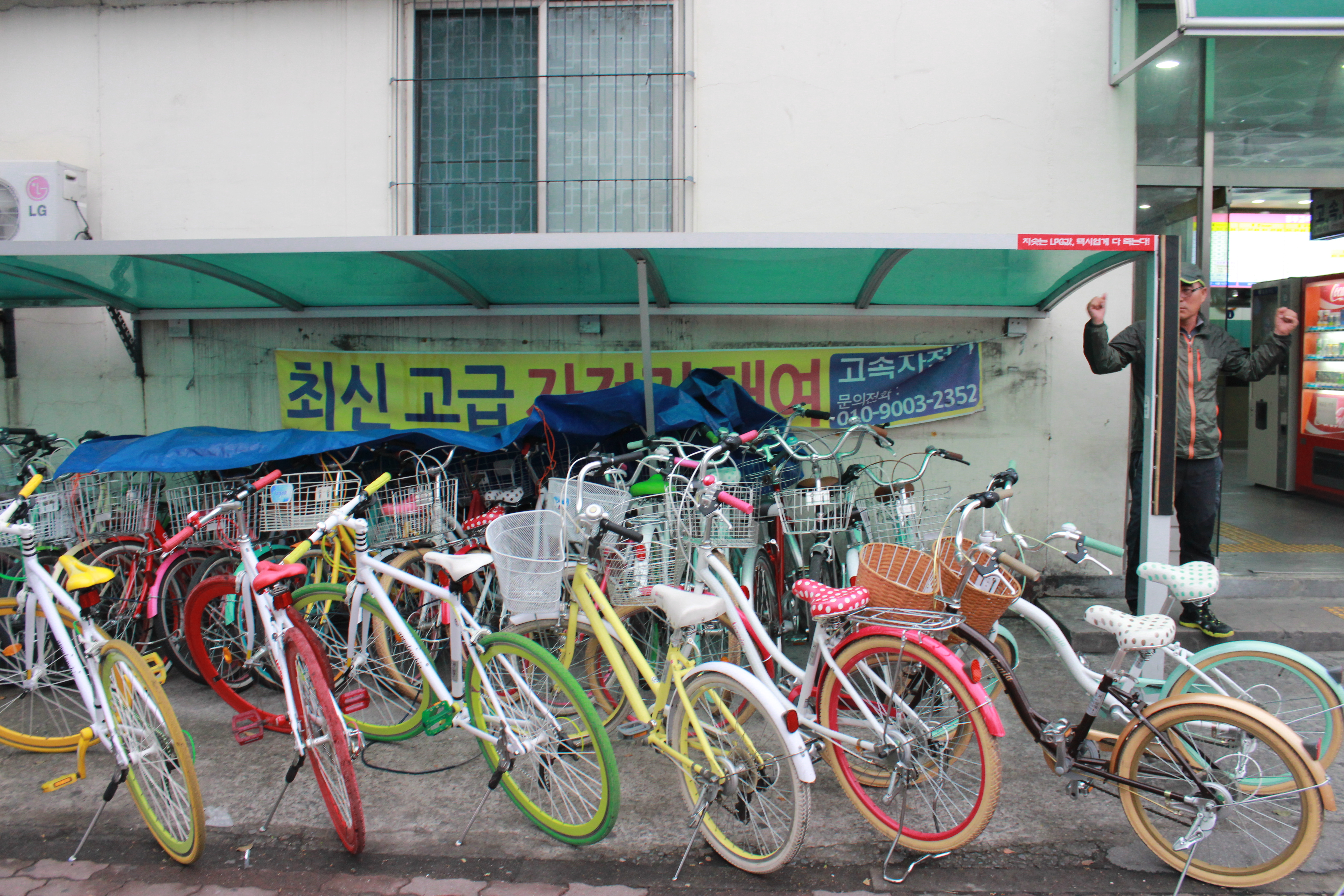Gyeongju: The Best Historical Bike Tour

Introduction to Gyeongju: The Best Historical Bike Tour
Gyeongju, located in South Korea, has rich cultural and historical significance. With its ancient temples, royal tombs, and UNESCO World Heritage Sites, this city has become a haven for history enthusiasts and adventure seekers. One of the best ways to explore the wonders of Gyeongju is through a historical bike tour. This article will provide an overview of Gyeongju's historical significance, highlight the benefits of exploring the city by bike, and offer some useful tips for an unforgettable experience.
Overview of Gyeongju's historical significance
Gyeongju was once the capital of the ancient Silla Kingdom, which reigned over Korea for nearly a thousand years. As a result, the city is home to a plethora of historical and cultural treasures. From the impressive Bulguksa Temple, with its stunning architecture and serene surroundings, to the incredible Royal Tombs of the Silla Dynasty, Gyeongju offers visitors a glimpse into the past. The city also boasts numerous museums, art galleries, and ancient relics that showcase its storied history. Exploring Gyeongju is like embarking on a time-travelling adventure, where each landmark tells a captivating story.
Benefits of exploring Gyeongju by bike
Embarking on a bike tour in Gyeongju offers a unique and immersive experience that allows you to appreciate the city's historical sites fully. Here are some of the benefits:
-
Flexibility and Freedom: With a bike, you can explore Gyeongju at your own pace. You can easily navigate through narrow streets, discover hidden gems, and make impromptu stops whenever something catches your eye.
-
Closer Interaction: Biking lets you get up close and personal with the historical sites. You can leisurely pedal through the ancient ruins and soak in the atmosphere, capturing every detail and getting a true sense of the place.
-
Health and Well-being: Cycling is not only an enjoyable way to explore but also a great form of exercise. It allows you to stay active while immersing yourself in the rich history of Gyeongju.
-
Environmental Friendliness: Opting for a bike tour helps reduce your carbon footprint and contribute to sustainable tourism. It allows you to appreciate the city's beauty while minimizing your impact on the environment.
Useful tips for an unforgettable experience
To make the most of your historical bike tour in Gyeongju, consider these tips:
-
Plan your itinerary: Research the must-visit historical sites and plan your route accordingly. Leave enough time to explore each location and immerse yourself in the history.
-
Wear comfortable clothing: Dress in lightweight, breathable attire suitable for cycling. Don't forget to wear sunscreen, a hat, and comfortable shoes.
-
Stay hydrated and fuel up: Carry a water bottle and snacks to energise yourself during the tour. There are various food stalls and cafes around Gyeongju where you can grab a quick bite.
-
Follow safety precautions: Observe traffic rules, wear a helmet, and be aware of your surroundings at all times. Stay on designated bike paths whenever possible.
-
Capture the memories: Bring a camera or smartphone to capture the beauty of Gyeongju. Don't forget to take breaks and soak in the stunning views.
Exploring Gyeongju by bike is an exciting and memorable way to immerse yourself in the rich history and cultural heritage of this ancient city. So grab a bike, embark on a historical adventure, and create memories that will last a lifetime.

Must-Visit Historical Sites in Gyeongju
For history enthusiasts and adventure seekers, Gyeongju, South Korea, is a treasure trove of cultural and historical significance. To fully experience the wonders of this ancient city, embarking on a historical bike tour is a must. Here are two must-visit historical sites in Gyeongju that should be included in your itinerary.
Seokguram Grotto and Bulguksa Temple
A visit to Gyeongju would not be complete without exploring the iconic Seokguram Grotto and Bulguksa Temple. Seokguram Grotto is a UNESCO World Heritage Site and houses a magnificent granite statue of the Buddha. The grotto's intricate carvings, serene atmosphere, and breathtaking view make it an awe-inspiring sight. Just a short distance away, you'll find the Bulguksa Temple, considered one of Korea's most important temples. Its beautiful architecture, well-manicured gardens, and ancient relics provide a glimpse into the richness of Korean Buddhism.
Cheomseongdae Observatory and Tumuli Park
Another must-visit site during your bike tour is the Cheomseongdae Observatory and Tumuli Park. Cheomseongdae Observatory, built during the Silla Dynasty, is one of the oldest existing astronomical observatories in Asia. It is an architectural marvel, showcasing the advanced knowledge of its time. From the observatory, you can enjoy panoramic views of Gyeongju City. Tumuli Park, also known as the Royal Tombs of the Silla Dynasty, is a vast open area that houses numerous ancient burial mounds. These mounds hold the remains of royalty and nobility of the Silla Kingdom and offer fascinating insights into the ancient culture and burial customs.
As you explore these historical sites by bike, you'll have the flexibility to soak in the rich history at your own pace. You can leisurely pedal through the narrow streets, get up close to the ancient ruins, and capture all the intricate details. Cycling also provides a great opportunity to stay active and experience the city's charm while minimizing your impact on the environment.
To make the most of your historical bike tour in Gyeongju, remember to plan your itinerary, wear comfortable clothing, stay hydrated, and follow safety precautions. Don't forget to bring a camera or smartphone to capture the stunning views and create lasting memories.
In summary, a historical bike tour in Gyeongju offers a unique and immersive experience that allows you to appreciate the city's rich cultural and historical heritage fully. With must-visit sites like Seokguram Grotto and Bulguksa Temple, Cheomseongdae Observatory and Tumuli Park, you'll embark on an unforgettable journey through time. So hop on your bike, explore the wonders of Gyeongju, and create memories that will stay with you forever.
Exploring Gyeongju's Cultural Heritage
Gyeongju, South Korea, is a city steeped in history and culture, offering a wealth of cultural treasures for those curious about the past. In addition to the must-visit historical sites mentioned earlier, other significant places should be included in your itinerary to experience the cultural heritage of Gyeongju fully.
Anapji Pond and Gyeongju National Museum
One of the highlights of Gyeongju is Anapji Pond, a historic garden that served as a pleasure garden for the Silla Dynasty's royals. The pond is surrounded by picturesque pavilions, elegant gardens, and a tranquil atmosphere that transports visitors back in time. As you stroll along the pathways and admire the reflections of the surrounding structures in the water, you'll gain a sense of the opulence and grandeur that once characterized the city.
To further delve into Gyeongju's rich history, visiting the Gyeongju National Museum is necessary. The museum houses a vast collection of artefacts and relics that provide insights into the region's ancient past. From intricate gold crowns to delicate ceramic pottery, the exhibits showcase the craftsmanship and artistic achievements of the Silla Dynasty. With informative displays and interactive exhibits, the museum offers a comprehensive overview of Gyeongju's heritage.
Gyeongju Historic Areas: Yangdong Village and Hahoe Folk Village
To experience the traditional way of life in Gyeongju, visiting the historic villages of Yangdong and Hahoe is highly recommended. These villages are UNESCO World Heritage Sites and offer a glimpse into the rural life of the Joseon Dynasty. As you wander through the narrow alleyways and traditional hanok houses, you'll feel a sense of timelessness and authenticity.
Yangdong Village is known for its well-preserved Confucian traditions and ancient architecture. The village is nestled in a scenic valley and boasts over 150 traditional houses, making it the largest traditional village in Korea. Hahoe Folk Village, on the other hand, is famous for its mask dance drama called Hahoe Byeolsin Gut Talnori. This captivating traditional performance showcases the ancient shamanistic rituals and beliefs of the region.
Exploring these historic areas allows visitors to witness the harmonious integration of human settlements with the natural surroundings. The traditional houses, folk customs, and natural landscapes provide a deeper understanding of the local culture and way of life.
Gyeongju offers a treasure trove of cultural heritage that should not be missed. From iconic historical sites like Seokguram Grotto and Bulguksa Temple to the enchanting Anapji Pond and Gyeongju National Museum, there are endless opportunities to discover the rich history and immerse yourself in the captivating stories of the past. Additionally, the historic areas of Yangdong Village and Hahoe Folk Village provide a glimpse into the traditional way of life in Gyeongju. So, put on your explorers' hat, pack your camera, and embark on a journey through Gyeongju's cultural heritage that will leave you with unforgettable memories.

Cycling Routes in Gyeongju
Gyeongju, with its rich historical heritage and breathtaking landscapes, is the perfect destination for a memorable biking adventure. Whether you are a history enthusiast, nature lover, or simply looking for a fun outdoor activity, exploring Gyeongju on a bike offers a unique and immersive experience. Here, we will highlight two of the best cycling routes in Gyeongju: the Gyeongju City Tour Course and the Gyeongju to Bomunho Lake Course.
Gyeongju City Tour Course
Embark on a journey through time as you pedal your way through the historic streets of Gyeongju. The Gyeongju City Tour Course covers the main historical sites and cultural landmarks of the city. Start your adventure at the Gyeongju Train Station, where you can rent a bike. From there, head towards Wolseong Fortress, a 6th-century fortress that once protected the capital of the ancient Silla Kingdom. Continue cycling to Cheomseongdae Observatory, one of the oldest observatories in East Asia. Take a moment to marvel at the ancient architecture and imagine the scholars who once gazed at the stars from this vantage point.
Continue your journey to Daereungwon Tomb Complex, where you can explore the ancient royal tombs of the Silla Dynasty. Marvel at the impressive burial mounds and gain insights into the rich history of Gyeongju. As you cycle through the streets of Gyeongju, you will also pass by other historical sites, such as the National Museum of Gyeongju and the beautiful Tumuli Park.
Gyeongju to Bomunho Lake Course
For those seeking a mix of history and natural beauty, the Gyeongju to Bomunho Lake Course is an ideal choice. This scenic route takes you from the heart of Gyeongju to the serene Bomunho Lake. Start your journey at the Gyeongju Train Station and head towards Anapji Pond, a historic garden with breathtaking views and a peaceful atmosphere. From there, continue cycling along the picturesque streets of ancient architecture and traditional houses.
As you leave the city behind, you will enter the tranquil countryside. Enjoy the fresh air and stunning landscapes as you pedal towards Bomunho Lake. Lush mountains surround the lake and offer a peaceful retreat from the bustling city. Take a break and savour the beauty of nature before heading back to Gyeongju.
Both cycling routes offer a unique perspective on Gyeongju's historical and natural treasures. Whether you explore the city or venture into the countryside, you will be rewarded with unforgettable experiences and breathtaking views. So, hop on a bike, soak up the culture and beauty, and create lasting memories on Gyeongju's best historical bike tour.

Tips for a Successful Historical Bike Tour
Choosing the right bike and equipment
When embarking on a historical bike tour in Gyeongju, it's essential to choose the right bike and equipment to ensure a comfortable and enjoyable experience. Here are some tips:
-
Select the right bike: In Gyeongju, you can easily rent bicycles to explore the city and its surroundings. Opt for a comfortable bike that suits your height and preference. Consider choosing a bike with gears to handle the hilly terrain.
-
Check the bike's condition: Before setting off, inspect the bike for any damages or malfunctions. Ensure the brakes, gears, and tires are in good condition. If you notice any issues, inform the rental shop immediately.
-
Wear appropriate gear: It's important to wear comfortable and appropriate footwear for biking. Consider wearing a helmet for safety, especially when cycling on busy roads.
-
Bring essential items: Carry a backpack or saddlebag to store your belongings during the bike tour. Bring water bottles to stay hydrated, sunscreen to protect your skin, and a small toolkit in case of any minor repairs.
Safety precautions and local regulations
To have a safe and enjoyable bike tour, it's crucial to follow safety precautions and adhere to local regulations. Here are some tips:
-
Familiarize yourself with traffic rules: Gyeongju has designated bike lanes, but it's important to know local traffic rules. Observe traffic signals, yield to pedestrians, and always ride on the right side of the road.
-
Stay visible: Gyeongju can get busy, especially during peak tourist seasons. To ensure your safety, wear bright-coloured or reflective clothing and use lights or reflectors on your bike, especially when cycling at dusk or night.
-
Be cautious of pedestrians: The historical sites and cultural landmarks in Gyeongju attract many tourists. Remember to slow down and yield to pedestrians when passing through crowded areas.
-
Respect local customs: Gyeongju is a city deeply rooted in history and culture. Show respect for the locals, their customs, and the historical sites you visit. It's important to follow any rules or regulations set by the historical sites and cultural landmarks.
By following these tips, you can enjoy a safe and memorable historical bike tour in Gyeongju. Immerse yourself in the rich history, stunning landscapes, and vibrant culture that this city has to offer. So, get on your bike and embark on a journey through time, exploring the hidden gems of Gyeongju on two wheels.

Benefits of Experiencing Gyeongju's History Through a Bike Tour
-
Flexibility: A bike tour allows you to explore Gyeongju at your own pace. You can easily navigate through narrow streets and alleys, giving you access to hidden historical gems that are often inaccessible by other means of transportation.
-
Closer Connection: Biking through the historical sites of Gyeongju allows you to experience the city's rich history and culture up close. You can fully appreciate the architectural wonders, ancient artefacts, and traditional customs that make Gyeongju a UNESCO World Heritage site.
-
Healthy and Eco-Friendly: Cycling not only provides a great way to exercise but also contributes to reducing your carbon footprint. By choosing a bike over a car or bus, you can enjoy the fresh air and scenic views while being environmentally conscious.
-
Immersive Experience: Riding a bike allows you to engage with the surroundings on a more intimate level. You can feel the contours of the land, smell the fragrance of flowers, and hear the sounds of nature as you pedal through the historical streets of Gyeongju.
-
Discover Hidden Gems: Gyeongju is known for its well-preserved historical sites, but there are also lesser-known attractions that can only be discovered by bike exploration. You may stumble upon serene temples, picturesque parks, or charming local cafes off the beaten path.
Remember to bring essential items, wear appropriate gear, and respect local regulations during your bike tour. Gyeongju offers a variety of bike rental options and well-maintained cycling paths, making it easy for visitors to embark on this historical adventure.
So, get ready to pedal your way through time and immerse yourself in the fascinating history and culture of Gyeongju. Explore the ancient capital, soak in the beauty of historical landmarks, and create lasting memories on a bike tour like no other.
